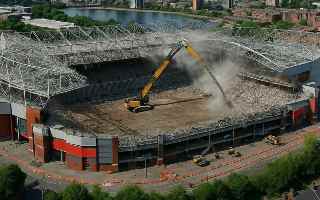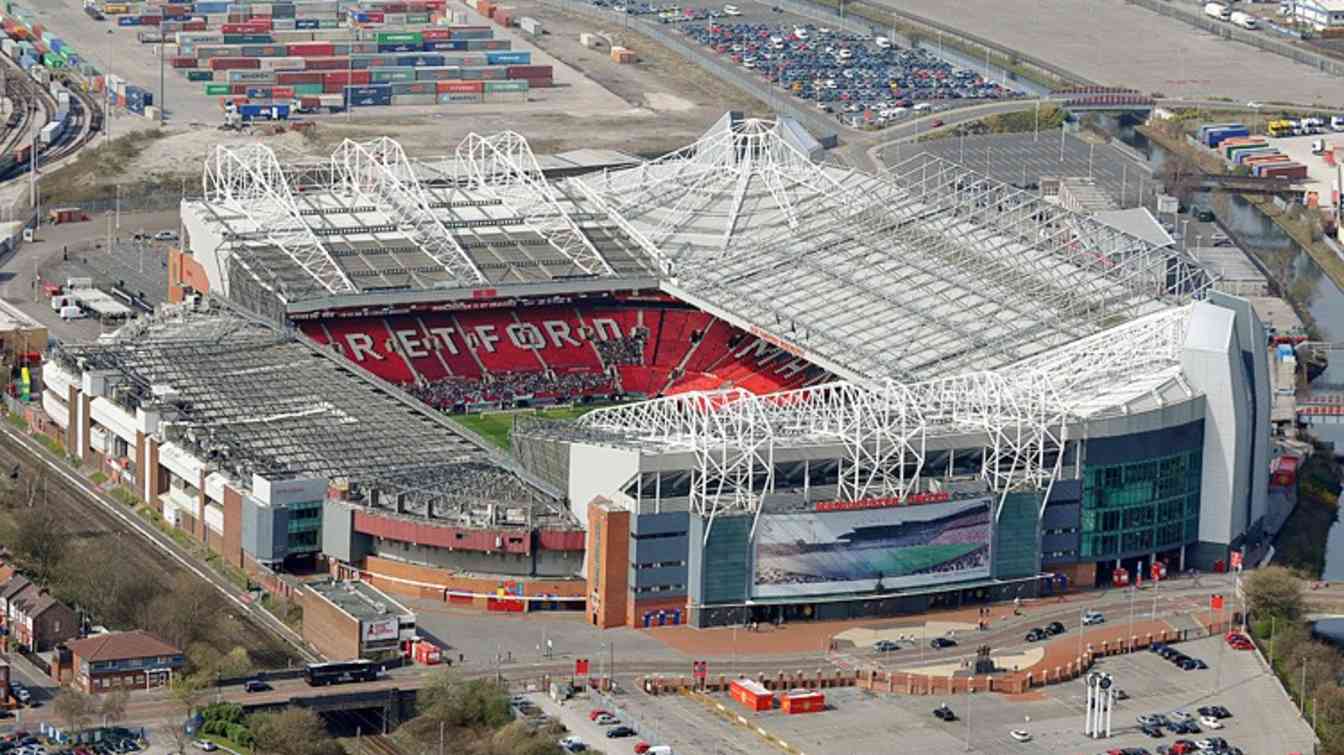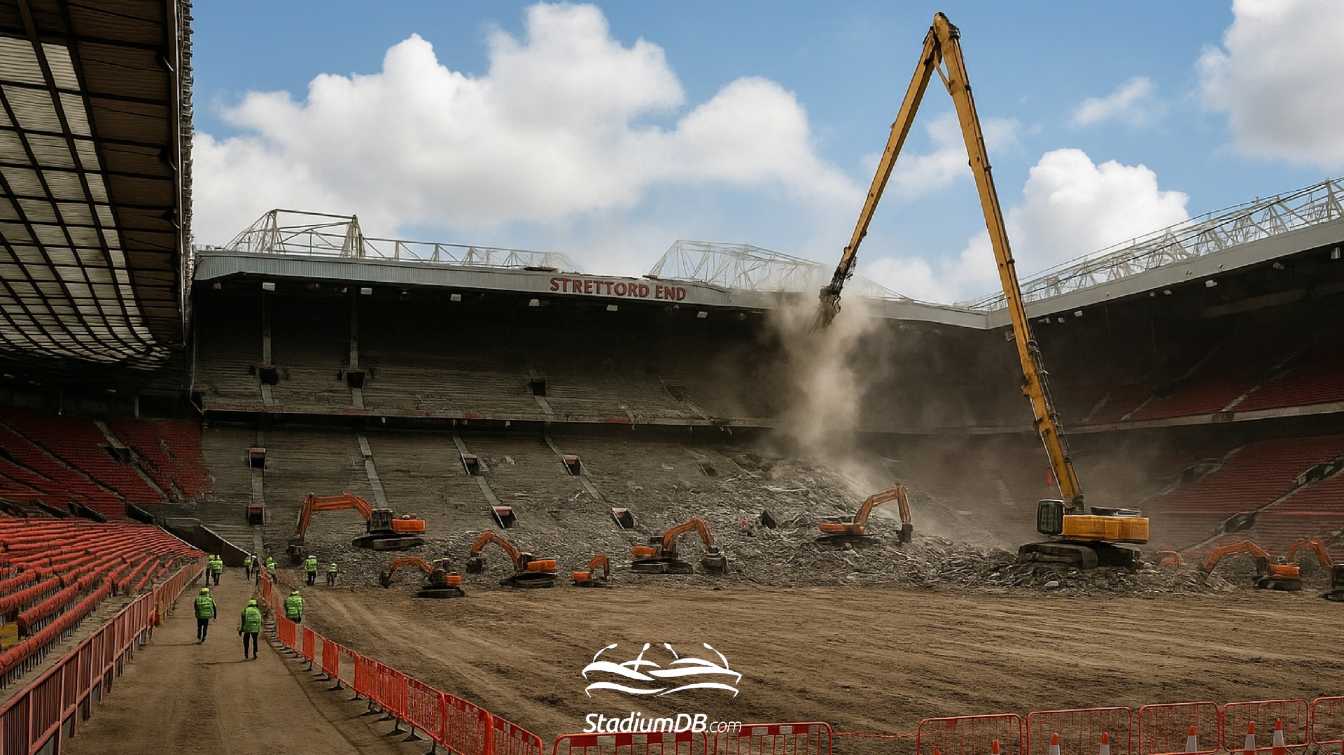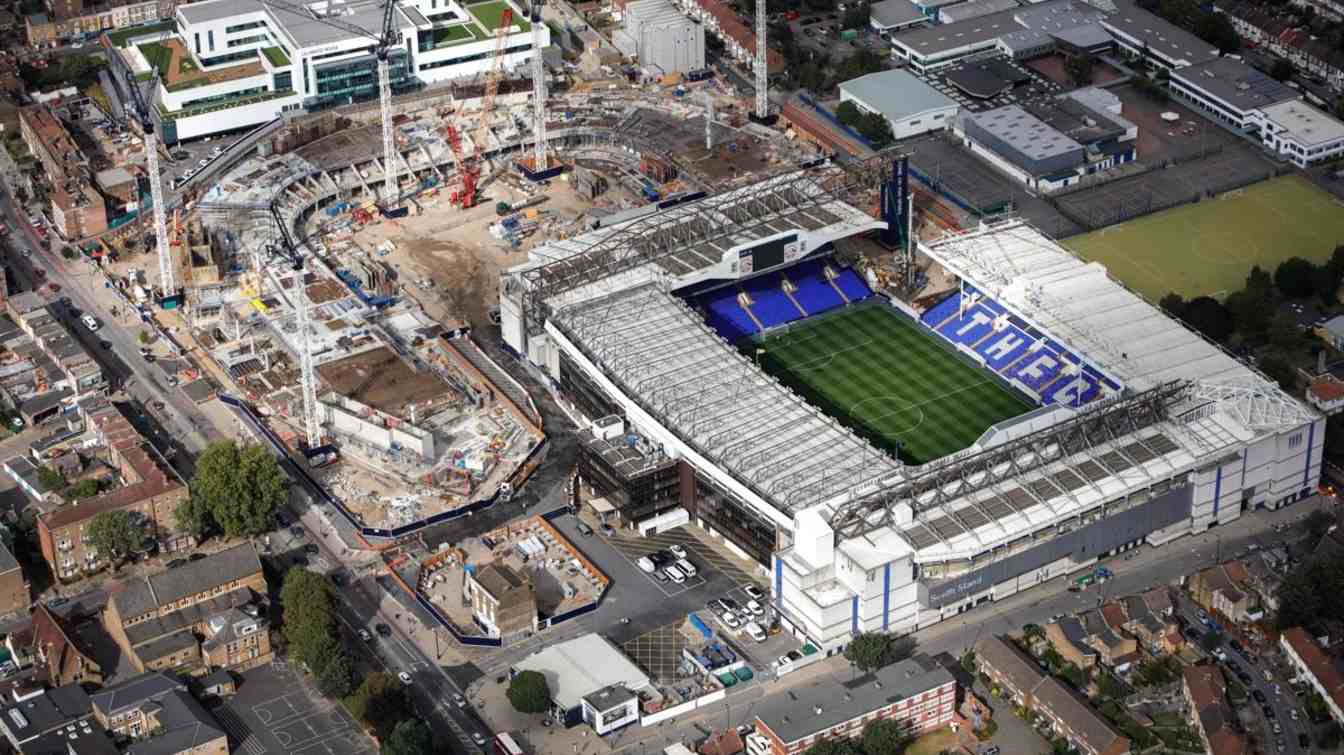England: When and how will Old Trafford be demolished?
source: StadiumDB.com; author: Paulina Skóra
 Manchester United plans to build a new stadium with a capacity of 100,000 seats, and Old Trafford is set to be demolished. Construction is expected to start shortly, with completion planned for the 2030/31 season.
Manchester United plans to build a new stadium with a capacity of 100,000 seats, and Old Trafford is set to be demolished. Construction is expected to start shortly, with completion planned for the 2030/31 season.
Advertisement
The end of a historic venue
Although the club has not yet officially announced a demolition plan, all indications suggest that Old Trafford will be completely dismantled once the new stadium is finished. Earlier concepts to transform the venue into a smaller stadium for the women’s and youth teams have been scrapped.
As of now, it is unclear what will be built on the site of the current stadium, but the land is likely to be included in a broader redevelopment plan for the Trafford area. Residential, recreational, and commercial investments are all possibilities.
 © Airviews Photography (cc: by-nd)
© Airviews Photography (cc: by-nd)
How will the demolition likely take place?
Due to the proximity of a railway line and canal, the demolition of Old Trafford will need to be carried out carefully, likely without the use of explosives, to minimize the risk to surrounding infrastructure. Demolishing a stadium without explosives is a lengthy and precise process that must be carefully planned and executed in stages.
The process begins with site preparation. Before physical demolition can begin, all utilities—gas, electricity, water, and internet—must be disconnected for safety reasons. Engineers conduct detailed structural assessments to determine the safest order for removing parts of the stadium and to prevent uncontrolled collapse. In urban areas, logistics are crucial: access routes for heavy machinery, waste storage areas, and workspace organization must all be planned in advance.
Next comes the interior dismantling. Before the main structure is taken down, everything removable—seats, railings, big screens, lighting systems, decorative elements, and backroom equipment—is stripped out. Many of these materials can be reused or recycled.
 Visualization of the demolition of Old Trafford.
Visualization of the demolition of Old Trafford.
The most complex phase is the demolition of the stadium's structural elements. This is usually done sector by sector. Steel components, such as roofs, scaffolding, and floodlight masts, are cut into smaller pieces and removed with cranes. Reinforced concrete stands are broken down using excavators fitted with hydraulic hammers or specialized concrete shears. In hard-to-reach areas, remote-controlled demolition robots are used. This controlled method is crucial for stadiums located in densely built-up areas or near railways, such as Old Trafford.
Finally, the materials are sorted and processed. Steel and aluminum are recycled, concrete is crushed and often reused as base material for roads, and plastics (like stadium seats) are processed or disposed of in accordance with environmental regulations.
Old Trafford is not the only stadium that will be demolished in the not-so-distant future. If you want to learn about other venues that are set to be torn down soon, make sure to watch our video.
Not just Manchester…
European football history is full of examples of stadium demolitions without explosives, often marking a new chapter for clubs. One of the most well-known cases is the demolition of Estadio Vicente Calderón in Madrid, former home of Atlético. The process took about a year and a half and was carried out in stages due to its challenging location—right next to a highway and the Manzanares River. After demolition, the site was transformed into a park and a modern residential-recreational complex integrated into Madrid’s urban landscape.
In London, Arsenal marked the end of an era by moving from its legendary Highbury to the new Emirates Stadium. The old ground was not completely demolished—the façades of the stands were preserved and incorporated into a residential complex, creating a harmonious blend of history and modernity. This is one of the best-known examples of architectural recycling of a football stadium in Europe.
Tottenham Hotspur took a different approach. The club decided to demolish White Hart Lane and build the new Tottenham Hotspur Stadium in its exact place. The process was meticulously planned so that the new venue could rise on the same site, allowing the club to remain in its historic neighborhood while gaining one of the most modern stadiums in the world.
 © Tottenham Hotspur | The demolition of White Hart Lane began from one of the corners of the stadium.
© Tottenham Hotspur | The demolition of White Hart Lane began from one of the corners of the stadium.
Advertisement

 StadiumDB
StadiumDB